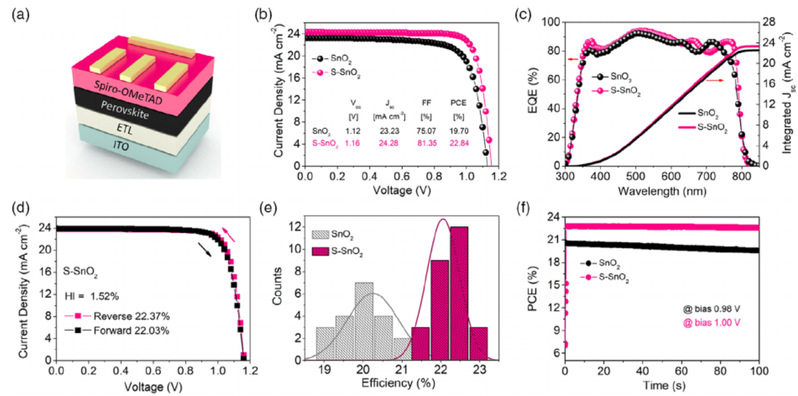At present, the photoelectric conversion efficiency of perovskite solar cells has exceeded 25%, which is regarded as a promising next-generation photovoltaic technology. Among them, the preparation of high-performance charge transport layer is one of the important directions for its future technological breakthroughs, and it has been widely concerned by researchers. Clarifying the carrier transmission dynamics, designing a reasonable path, and reducing process losses are of great significance to the development of perovskite solar cells. Recently, the research group cooperated with the research group of Professor Li Fenghong of Jilin University to synthesize organic-inorganic hybrid polyacid supramolecule [(C8H17)4N]4[SiW12O40] (TASiW-12), and successfully applied it to multifunctional, efficient and stable perovskite electronics Transmission layer construction. This work uses TASiW-12 doped tin oxide (SnO2) to effectively passivate SnO2 bulk oxygen vacancy defects, reduce the non-radiative recombination of carriers inside the device, and introduce dipole auxiliary charges at the interface between SnO2 nanoparticles and perovskite Extraction significantly inhibits charge accumulation. The modified SnO2 transport layer has better energy level matching performance in solar cells, effectively reducing the open circuit voltage loss of the device. The modified device successfully obtained 22.84% photoelectric conversion efficiency, and showed good light and long-term stability. The 3072-hour stability test still maintained 94.35% of the initial efficiency. The results were published in the internationally renowned journal Solar RRL. PhD student Shi Zejiao of the research group was the first author, and the leader of the research group Professor Yiqiang Zhan was the corresponding author.


